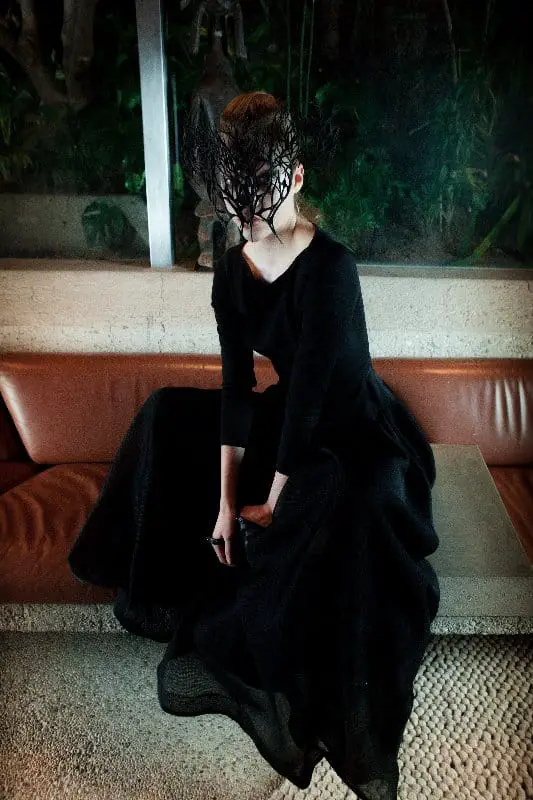By Chere Di Boscio
What happens when a high tech printing corporation meets an avant garde fashion designer?
Stratasys, the 3D printing market leader, was interested in the possible synergies between 3D printing and fashion, and after a long search, they selected cutting edge fashion designer Julia Koerner to print an entire high-end fashion collection.
Koerner was a good choice. She had already co-designed collections with Haute Couture fashion designer Iris van Herpen, and French Couture House Maison Lesage amongst others to design delicately futuristic creations.
Taking a cue from nature, she called her first solo collection for Stratasys ‘Sporophytes’–a term that refers to the diploid multicellular stage in the life cycle of a plant or alga. The work features three high end 3D-printed fashion pieces resembling patterns and textures observed in nature, which were printed on the world’s only colour multi-material 3D printer.

We found this avant-garde collaboration highly inspiring and hopeful, opening new opportunities for less waste in fashion. We asked the designer herself for her thoughts on this technique and its potential role in the design industry.
What attracted you to 3D printing?
Firstly, the additive manufacturing technique allows for 3-dimensional design and the realisation of complex geometries. Researching emergent computational design methods and exploring parametric design tools I find attractive. Secondly, the technology has advanced significantly within recent years and 3D printing with flexible materials provides great potential for the fashion industry. Unique 3D printing technology from Stratasys allows me to print fashion pieces in varying hardness levels and shades of colour, all in a single 3D print. This would not be possible using traditional methods.


What do you love most about it ?
The exploration of emergent technologies within cutting-edge product design, fashion design and architectural design, is fascinating. The engagement with intelligent and optimised design methodologies is intriguing. I also find the interdisciplinary collaboration with other artists and designers, as well es the exploration of new materials, particularly exciting.

Does 3D printing reduce waste in the fashion industry?
This question is speculative as apparel as such, that waste would come into discussion, does not yet exist. 3D printing technology has been introduced to the fashion world by Dutch fashion designer Iris van Herpen, who I collaborated with on three dresses. These 3D printed pieces, as well as other designs I have worked on, are all Haute Couture pieces and the technology has been exclusively used for single fashion pieces showcased either on Paris Runway shows and/ or in museums. This is due to the high costs of manufacturing and design work. There is an opportunity that 3D printing apparel could potentially reduce waste and the printed clothes could be recycled. Beyond that, mass customisation to create clothes which perfectly fit each individual consumer could potentially advance the online shopping market.


This work will be exhibited at High Museum Atlanta as part of the Iris van Herpen Solo Exhibition from November 20th.
- The Best Reformation Sun Dresses For 2025 - July 22, 2025
- WIN A Pair Of Custom Made Jeans By Sumissura - July 19, 2025
- How To Choose The Best Hairstyle For Your Face - July 7, 2025
